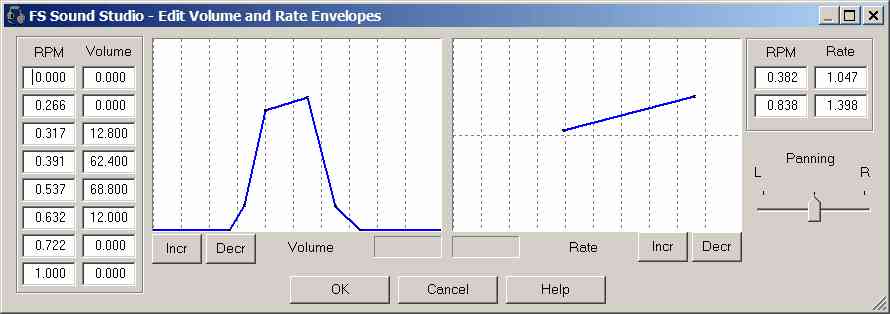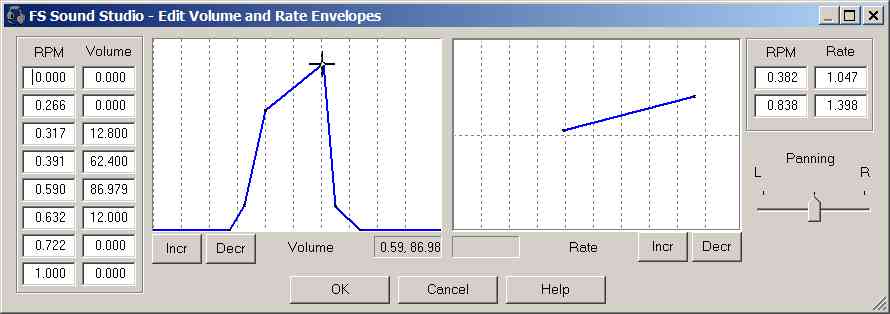
The Volume and Rate envelopes are shown both graphically and in a numerical table format. Note that the Sound Preview window continues to function while the Envelope Editor is active, and any changes made in the Envelope Editor are immediately reflected in the Sound Preview Window.
Editing the Volume Envelope
Make sure you're still listening to the Preview sound, if not press the PLAY
